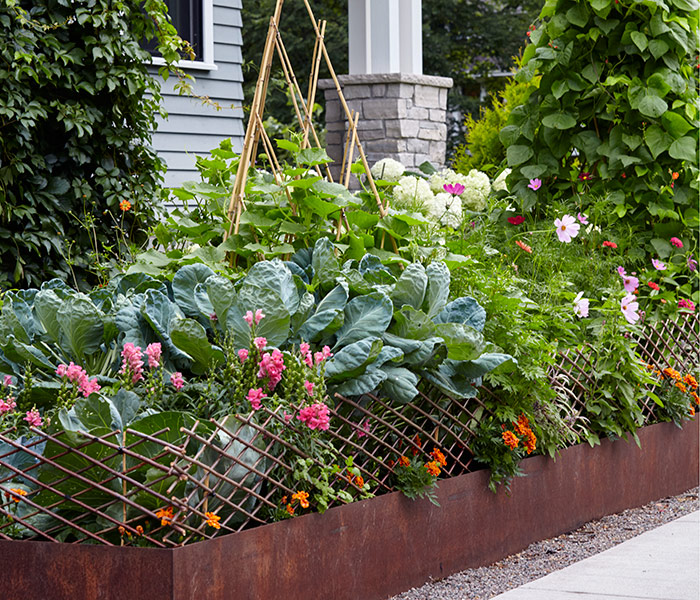
Patio Gardening: Growing Herbs, Flowers, and Veggies in Limited Space
Introduction
Patio gardening is an excellent way to enjoy the benefits of gardening without the need for a large yard. With a little creativity and planning, you can create a beautiful and productive patio garden that will provide you with fresh herbs, flowers, and vegetables all season long.
Choosing the Right Patio Plants
When selecting plants for your patio garden, consider the following factors:
- Sunlight: Most patio gardens receive full or partial sun. Choose plants that are well-suited to your specific light conditions.
- Space: Patio gardens are often limited in space. Choose compact varieties of plants that will not outgrow their containers.
- Water needs: Some plants require more water than others. Choose plants that are drought-tolerant or that can withstand the heat and wind of a patio environment.
Container Gardening Basics
Most patio gardens are grown in containers. When choosing containers, consider the following:
- Size: The size of the container should be appropriate for the size of the plant.
- Drainage: Containers should have drainage holes to prevent waterlogging.
- Material: Containers can be made from a variety of materials, including plastic, clay, and wood. Choose a material that is durable and aesthetically pleasing.
Soil and Fertilizing
The soil in patio containers should be well-draining and rich in organic matter. You can purchase pre-mixed potting soil or make your own by mixing together equal parts compost, peat moss, and perlite.
Fertilize your patio plants regularly to ensure that they have the nutrients they need to thrive. Use a balanced fertilizer that is specifically designed for container plants.
Watering
Patio plants need to be watered regularly, especially during hot and dry weather. Water deeply and infrequently, allowing the soil to dry out slightly between waterings.
Pest and Disease Control
Patio plants are susceptible to the same pests and diseases as plants grown in the ground. Inspect your plants regularly for signs of pests or diseases and treat them promptly.
Creating a Beautiful Patio Garden
With a little planning, you can create a beautiful and productive patio garden that will be the envy of your neighbors. Here are a few tips:
- Use vertical space: Trellises and hanging baskets can help you to maximize space and create a more visually appealing garden.
- Mix and match plants: Choose a variety of plants with different heights, textures, and colors to create a dynamic and interesting garden.
- Add accessories: Patio furniture, planters, and other accessories can help to create a more inviting and comfortable outdoor space.
Growing Herbs in a Patio Garden
Herbs are a great addition to any patio garden. They are easy to grow, require minimal space, and can be used to flavor a variety of dishes.
Here are a few tips for growing herbs in a patio garden:
- Choose the right herbs: Some herbs, such as basil and cilantro, are more heat-tolerant than others. Choose herbs that are well-suited to your climate.
- Plant in well-draining soil: Herbs do not like to sit in wet soil. Make sure to plant them in a well-draining potting mix.
- Water regularly: Herbs need to be watered regularly, especially during hot and dry weather.
- Fertilize occasionally: Fertilize your herbs every few weeks with a balanced fertilizer.
Growing Flowers in a Patio Garden
Flowers can add a splash of color and beauty to your patio garden. Here are a few tips for growing flowers in a patio garden:
- Choose the right flowers: Some flowers, such as petunias and marigolds, are more heat-tolerant than others. Choose flowers that are well-suited to your climate.
- Plant in well-draining soil: Flowers do not like to sit in wet soil. Make sure to plant them in a well-draining potting mix.
- Water regularly: Flowers need to be watered regularly, especially during hot and dry weather.
- Fertilize occasionally: Fertilize your flowers every few weeks with a balanced fertilizer.
Growing Vegetables in a Patio Garden
Vegetables are a great way to add fresh produce to your diet. Here are a few tips for growing vegetables in a patio garden:
- Choose the right vegetables: Some vegetables, such as tomatoes and cucumbers, are more heat-tolerant than others. Choose vegetables that are well-suited to your climate.
- Plant in well-draining soil: Vegetables do not like to sit in wet soil. Make sure to plant them in a well-draining potting mix.
- Water regularly: Vegetables need to be watered regularly, especially during hot and dry weather.
- Fertilize occasionally: Fertilize your vegetables every few weeks with a balanced fertilizer.
Troubleshooting Common Patio Gardening Problems
Here are a few tips for troubleshooting common patio gardening problems:
- Pests: Aphids, spider mites, and whiteflies are common pests in patio gardens. Treat them promptly with an insecticidal soap or neem oil.
- Diseases: Powdery mildew and blight are common diseases in patio gardens. Treat them promptly with a fungicide.
- Nutrient deficiencies: Yellowing leaves can be a sign of nutrient deficiencies. Fertilize your plants regularly to prevent this problem.
- Overwatering: Overwatering can lead to root rot. Water your plants deeply and infrequently, allowing the soil to dry out slightly between waterings.
- Underwatering: Underwatering can cause plants to wilt and die. Water your plants regularly, especially during hot and dry weather.
Conclusion
Patio gardening is a great way to enjoy the benefits of gardening without the need for a large yard. With a little creativity and planning, you can create a beautiful and productive patio garden that will provide you with fresh herbs, flowers, and vegetables all season long.